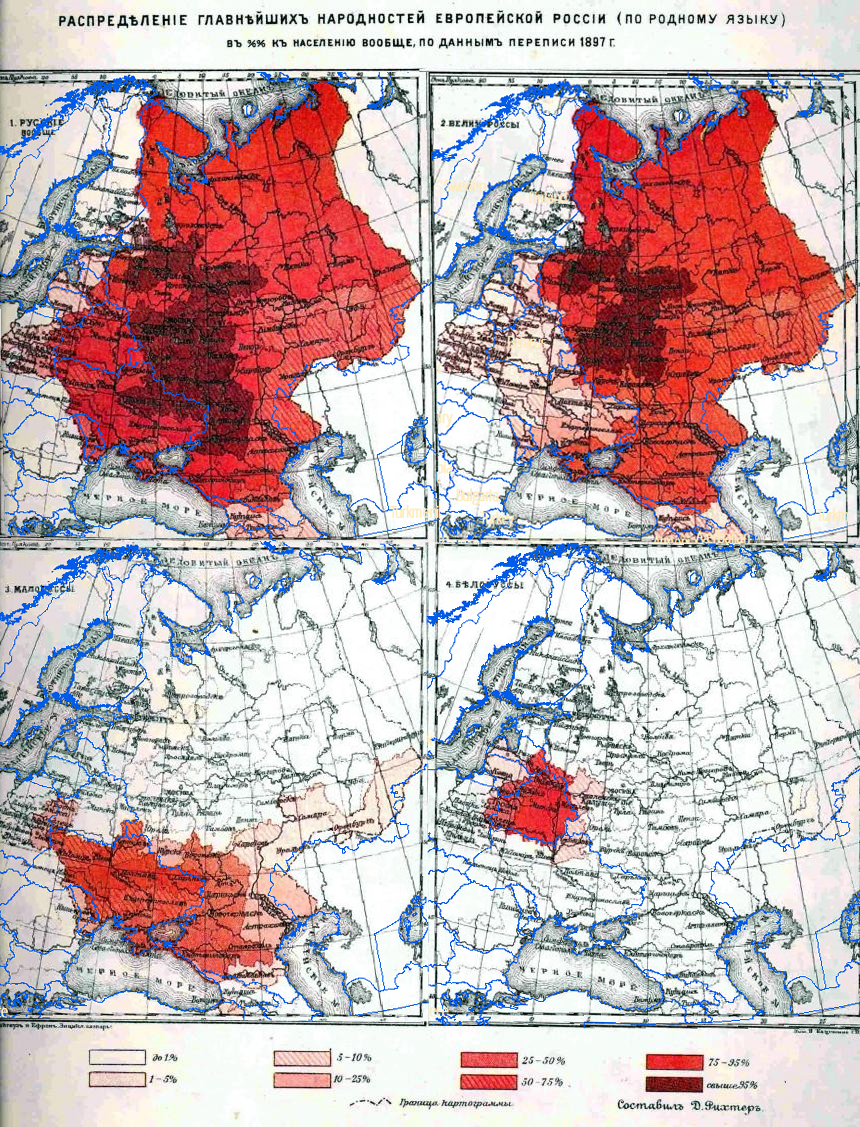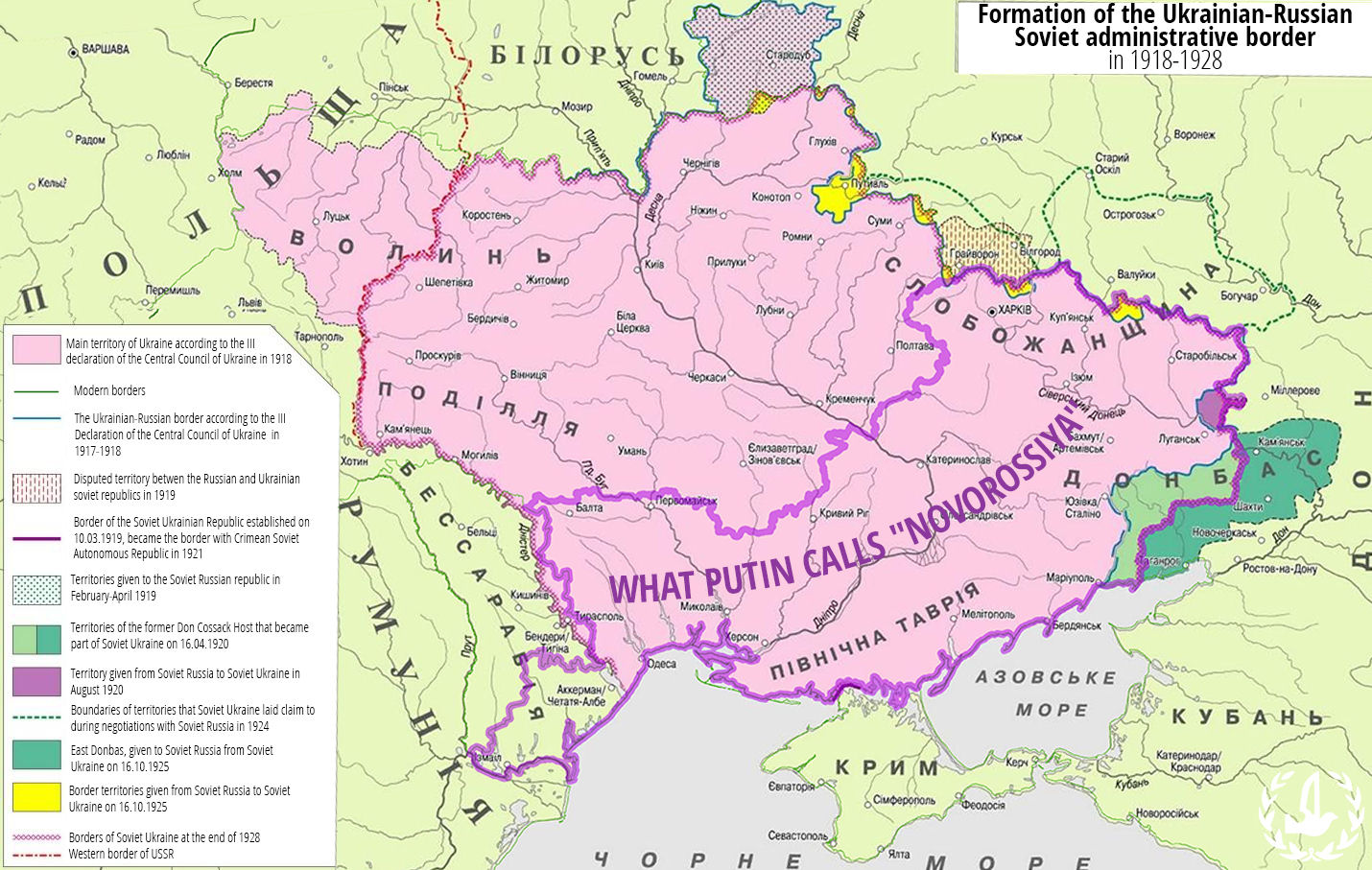This being said, history presents a few problems with this Novorossiya narrative that has already cost thousands of Ukrainian and an untold number of Russian lives.
1. Ukrainians colonized Novorossiya long before Russia
According to likbez.org.ua (a joint project of scholars from the Ukrainian Institute of National Memory and the National Academy of Science, along with the newspaper Ukrayinska Pravda, which, according to Ukraine Today, seeks to disprove myths about Ukrainian history spread by Russian propaganda), Slavic colonization of the territories of the modern Ukrainian South-East started back in the 16th century when Ukrainian Kozak strongholds and villages emerged in the Lower Dnipro region. Then Crimean Tatar territories became a refuge after failed Ukrainian rebellions against Polish and later Russian administration. Ukrainians also fled south from the Russian-aligned Hetmanate to escape the fate of serfdom, where they were joined by Christian migrants from the Ottoman Empire and German colonists. The original Novorossiya Governorship was made by the Russian Empire’s administration on the basis of Kozak territories in 1764, before the Russo-Turkish wars that established Russian control over the rest of the region. Ukrainian Black Sea Cossacks played a crucial part in these Russian wars, their numbers being as large as 42 thousand men. These newly established colonial cities of a “New Russia,” including the booming port of Odesa, were built by Ukrainian hands.
2. Novorossiya’s population has always been mostly Ukrainian-speaking
Disproving the myth of a ‘Russian-speaking southeast’ requires perhaps only one picture, illustrating the results of the Russian Empire’s 1897 census. This census did not take into account ethnicity, but rather language. According to the then-dominant theory by Russian elites, the Russian people were divided into Velikorossy (“Great Russians”, now known as simply Russians), Belorussy (“White Russians”, now Belarusians) and Malorossy (“Little Russians”, now Ukrainians). The census results indicated that the Ukrainian language was dominant in the territories of roughly modern Ukraine, including Novorossiya, Russian being a minority in the region:

According to the census, Ukrainians formed as much as 66% of the Southeast’s ethnic composition, while Russians comprised only 20%. Various Soviet censuses mirror these numbers (although based on ethnicity, not language); the latest 2001 census in independent Ukraine yielded a figure of 67.8%, with Russians accounting for 26.8%.
It should be noted, however, that in 1897 major cities in “New Russia” held a significant Russian majority, which is attributed to the Russian Empire’s policies of Russification through urbanization and education, as well as colonial migration which did not extend to the rural countryside where the majority of the population resided. This disturbing trend continues to this day, with primary schools in Crimea banning Ukrainian-language curriculum.
3. During the Civil War of 1917-1922, all Ukrainian governments viewed Novorossiya as part of Ukraine
The Russian Empire had no ethnic administrative subdivisions (as opposed to the USSR’s constituent national republics), so as national movements arose after the toppling of the Tsar in 1917, drawing the borders of emerging autonomies/independent states became tricky. This has led “Novorossiya” revisionists to declare that Bolsheviks had ‘arbitrarily drawn Ukraine’s south-eastern border to include the allegedly Russian regions.’ However, in reality, despite a multitude of short-lived “republics” springing up on Ukrainian territory in the chaos of the civil war (most notably in Donbas and Odesa), both the freshly-formed Ukrainian National Republic and the Bolshevik-run state drew Ukrainian borders on ethnic boundaries, disagreeing mostly in who and how should govern this overlapping, mutually claimed territory.

The Donetsk–Krivoy Rog Soviet Republic which claimed parts of Novorossiya including modern Donbas distinguished itself from Ukraine on ideological rather than ethnic principles, and, unlike the modern “republics” of Eastern Ukraine, was never supported by the Kremlin and promptly integrated into Soviet Ukraine. While Lenin did want Ukraine under Bolshevik control (which led to numerous Soviet atrocities in Ukraine throughout the years, hence the current toppling of Lenin’s statues), he never disputed the fact that Novorossiya was Ukrainian territory.
4. The South-East overwhelmingly voted for Ukraine’s Independence from the Soviet Union
In 1991, 70 years after the Civil War, prompted by a failed coup in Moscow aimed at restoring the Communist Party’s control over the collapsing USSR, Ukraine’s government issued a declaration of independence on August 24 – a day now widely celebrated as Ukraine’s Independence Day. On December 1 of the same year this declaration was supported at a referendum by an overwhelming majority of 92% (with a turnout of 84%). Unlike many other divided Ukrainian elections, however, the majority held throughout the country’s regions, with Luhansk and Donetsk giving 83% in favor of independence (the lowest in continental Ukraine). Even in the Russian-majority Crimea independence won, if only by a margin of several percent (and with a turnout of mere 60%).
This was the historical choice of the so-called “Novorossiya.” But recently it had to make another.
5. The pro-Russian protests in the South-East were nothing like Euromaidan
The Russian (and pro-Russian) media tend to portray pro-Russian protests that swept over south-eastern Ukraine this spring in the wake of the fall of President Yanukovych as mirroring the Euromaidan revolution in Kyiv, which they tend to present as an uprising of Western Ukrainian “Nazi” radicals. While the former claim may hold somewhat true in describing the early days of the Donetsk and Luhansk republics (which were restricted to their capitals and whose tire barricades were a form of cargo cult blindly copying Maidan tactics), in other regions claimed to be part of “Novorossiya” the situation was radically different. As Euromaidan Press’s Matthew Babiak pointed out, in no region beyond Donbas did the protests’ turnout rise to 10 000, which is astonishingly low compared to Kyiv, where hundreds of thousands protesters turned up at one point last December. What is even more remarkable, in many regions pro-Ukrainian protests surpassed the pro-Russian ones in number, going over the benchmark 10 000 in cities like Kharkiv, Dnipropetrovsk and Odesa. Moreover, at no point did the pro-Russians manage to pull off an occupation on the scale of even Donetsk and Luhansk, where it eventually had to be propped by Russian weapons, mercenaries, and special forces. A recent Russian independent poll has suggested that south-eastern Ukraine is still not eager to join their brethren in Russia – or “New Russia,” for that matter. To 43%, Novorossiya was, at best, an alien concept, while 4% described it as a simply an archaic, historical term.
Probably it would be better for everyone involved if Novorossiya stayed just that.






